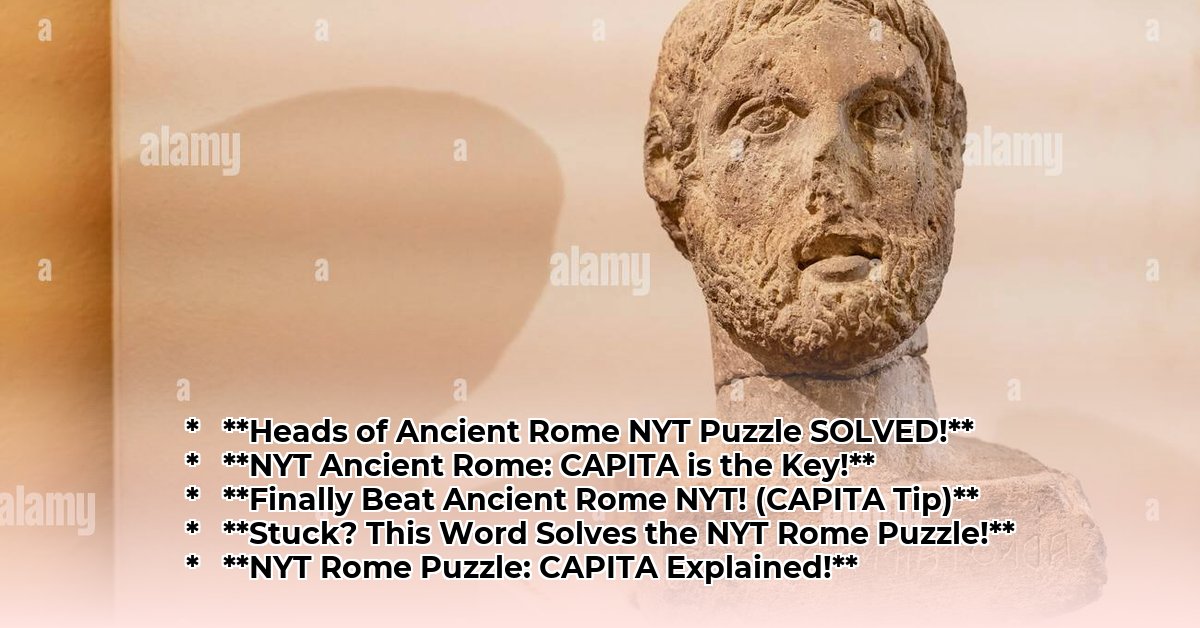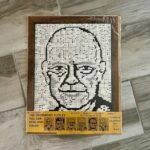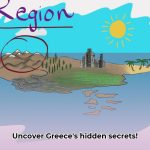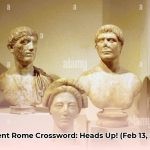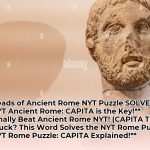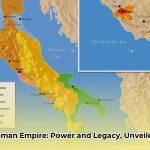Stuck on that elusive “Heads of Ancient Rome” clue in your New York Times crossword? Many seasoned solvers find themselves pausing here. This classic brain-teaser, which frequently appears in puzzles, including recent editions like February 13th or 14th, 2025, has a definitive, historically rooted answer: CAPITA. Beyond simply knowing the solution, understanding why CAPITA is correct reveals a fascinating intersection of language, history, and clever puzzle design, empowering you to tackle future crosswords with newfound confidence. You can further explore the topic here.
Decoding the Latin Behind ‘CAPITA’
To truly grasp why CAPITA is the perfect fit for “Heads of Ancient Rome,” we embark on a brief linguistic journey back to the heart of the Roman Empire. Latin, the language of Rome, is the key.
The singular Latin word for “head” is caput. This foundational term not only referred to the anatomical part but also colloquially to a person, a leader, or even a literal “head count” in a population. When the clue asks for “Heads” (plural), we must seek the plural form of caput. In Latin, just as English transforms “head” into “heads,” caput becomes capita.
This direct linguistic link is precisely what crossword constructors exploit. They leverage common Latin roots that permeate English vocabulary to craft clues that are both challenging and logically solvable. The term capita itself is still used today in phrases like “per capita” (meaning “per individual” or “per head”), underscoring its enduring relevance and making it a prime candidate for a well-informed crossword clue. Understanding this etymological connection transforms a frustrating blank into an insightful moment of clarity.
More Than Just Anatomy: The Multifaceted Meaning of Caput in Rome
In ancient Rome, caput held layers of meaning crucial to its society:
- Individuals: A caput could simply refer to a person, particularly in legal or census contexts when counting citizens.
- Leaders: Metaphorically, the “head” of an organization or state was its leader. While not a direct title, the concept of a “head” or principal figure was vital to Roman governance.
- Capital Cities: Rome itself was often called the Caput Mundi (“Head of the World”), signifying its preeminence and central role in the empire.
- Legal Status: The term caput was also central to Roman law, where capitis deminutio referred to a change in legal status or a loss of civic rights, literally a “diminution of head” or personhood.
Given these broad historical applications, “Heads of Ancient Rome” cleverly encompasses any of these plural interpretations, all pointing unequivocally to CAPITA.
Navigating Crossword Nuances: Dates, Variations, and the NYT Standard
You might notice slight date discrepancies when researching specific NYT crossword clues online, with some sources listing February 13th, 2025, and others February 14th, 2025, for this particular clue. This is a common occurrence in the world of syndicated puzzles:
- Regional Editions: The New York Times, like many major publications, sometimes has minor variations in its crossword distribution or puzzle dates across different regional editions or online platforms.
- Archiving Practices: Various online crossword archives may index puzzles based on their publication date in a specific edition, leading to minor one-day shifts.
Regardless of the precise date you encountered the “Heads of Ancient Rome” clue, the solution CAPITA remains consistent. Crossword constructors maintain a high standard of consistency for core answers, ensuring that a well-researched clue retains its definitive solution across iterations. Always verify the specific puzzle context, but trust in the linguistic accuracy of CAPITA.
Elevating Your Crossword Prowess: Advanced Strategies for Every Solver
Moving from merely solving a single clue to mastering the entire grid requires a strategic approach. Cultivate these habits to significantly enhance your crossword skills and become a more proficient solver:
-
Prioritize the Path of Least Resistance: Always begin by filling in the answers you know immediately. These “easy wins” provide critical interlocking letters that illuminate the more challenging clues. A partially filled grid is infinitely easier to navigate than a blank one, creating a positive feedback loop that accelerates your progress.
-
Master Common Abbreviations and Crosswordese: Puzzles frequently use shorthand, acronyms, and specific terms unique to the crossword world (e.g., “ORA” for “oratorio,” “ELI” for “Yale founder”). Familiarize yourself with these recurring patterns. Many online resources list common “crosswordese” terms that appear repeatedly.
-
Cultivate a Foundational Knowledge of Latin and Greek Roots: As demonstrated by “CAPITA,” a solid understanding of common prefixes, suffixes, and root words from Latin and Greek is an immense asset. These ancient languages form the bedrock of a vast portion of English vocabulary, making them indispensable tools for deciphering complex or obscure clues related to science, medicine, law, and history.
-
Practice Contextual Deduction and Wordplay: Crosswords often involve puns, double meanings, and clever misdirection. Pay attention to the clue’s phrasing: Is it capitalized? Is it plural? Does it imply a sound-alike? Learn to think laterally and consider how words can be manipulated or interpreted in unexpected ways.
-
Strategically Leverage Digital Tools (Post-Attempt): While the satisfaction comes from solving independently, online crossword solvers and dictionaries are invaluable learning tools. If you’re truly stuck, use them to find the answer, but then critically analyze why that answer is correct. Understanding the “why” builds your internal knowledge base for future puzzles, turning a temporary struggle into lasting insight.
-
Regular, Diverse Practice: Consistency is paramount. Solve puzzles from various sources (not just the NYT) and on different days of the week (difficulty often increases towards the weekend). This exposure to diverse clue styles and themes will broaden your general knowledge and sharpen your problem-solving faculties.
The Enduring Allure of Latin in Modern Crosswords
Why does a language considered “dead” consistently feature prominently in contemporary crossword puzzles? The reasons are manifold, contributing to the intellectual richness and unique challenge of the crossword experience:
- Historical and Cultural Bedrock: Latin was the language of the Roman Empire, a civilization that profoundly shaped Western law, government, architecture, and language. Crossword puzzles, as tests of general knowledge and cultural literacy, naturally reflect this deep historical impact.
- Linguistic Precision and Versatility: Latin’s structured grammar and precise semantic qualities make it an ideal source for concise, clever, and often ambiguous clues. Its roots provide a rich lexicon that can be manipulated for wordplay, offering multiple pathways to a single solution.
- Intellectual Tradition and Accessibility: Referencing classical knowledge adds a layer of intellectual sophistication that appeals to many solvers. Yet, many Latin roots are so ingrained in English that even those without formal Latin training can often deduce meanings through context, making these clues paradoxically accessible to a wide audience.
- Conciseness for Grid Fit: Latin words and roots are often compact, fitting neatly into the constrained grid of a crossword puzzle. Single Latin words can convey complex ideas, making them efficient choices for constructors.
The “Heads of Ancient Rome” clue is more than just a momentary hurdle; it is a mini-masterclass in linguistics and history embedded within your daily puzzle. It vividly illustrates how a single word like CAPITA can traverse millennia, bridging the grandeur of ancient Roman society with the satisfying ritual of your modern crossword. Embrace these linguistic and strategic insights, and you’ll find yourself not only solving more clues but truly appreciating the intricate craft behind every puzzle.
